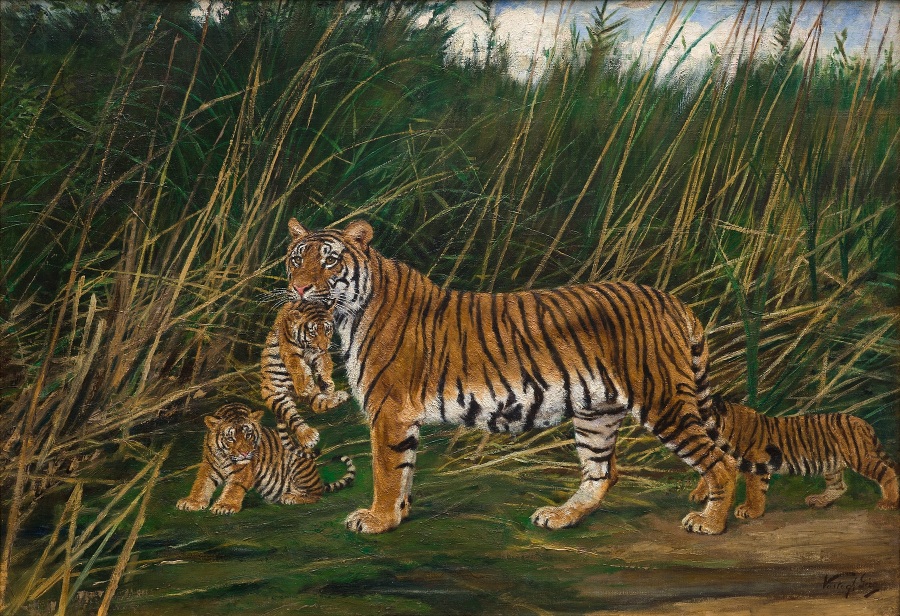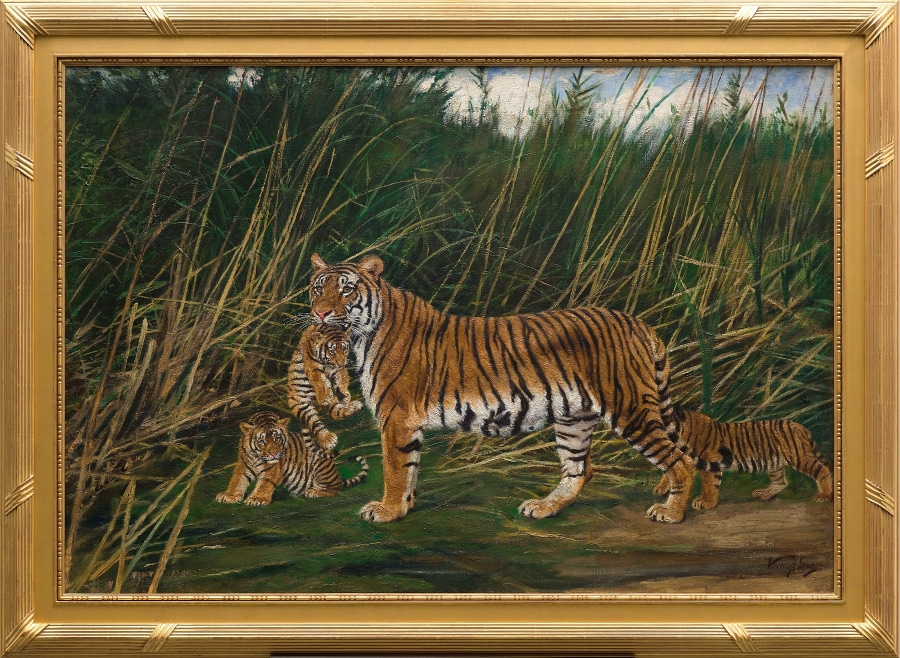Provenance
Private collection, Argentina
Catalogue note
Géza Vastagh was a Hungarian painter best known for his evocative depictions of animals, particularly lions and tigers, which he painted with both scientific observation and deep emotional resonance. Born in 1866 in Kolozsvár, in what was then the Austro-Hungarian Empire, Vastagh came from a family of artists. His father, György Vastagh, was a portrait painter who had fought in the Hungarian Revolution of 1848. Géza and his brother György the younger were both trained first by their father, then at the Academy of Fine Arts in Munich, where Géza began exhibiting in his late teens.
Although his early career focused on portraiture and genre scenes influenced by Realist painters like Gustave Courbet, Vastagh’s trajectory changed dramatically after a series of travels to North Africa and the Middle East beginning in 1890. There, he became deeply inspired by the region’s wildlife, especially the big cats he observed in zoos and in the wild. These travels marked the beginning of his lifelong fascination with exotic animals, particularly lions and tigers, which would come to define his mature work.
One striking example of Vastagh’s animal studies is our painting depicting a mother tiger cradling a cub in her jaws, while two other cubs linger close to her side amid tall, golden grasses. The scene captures both the raw power and tender instincts of the great feline, rendered with detailed attention to the anatomy and behavior of the animals. The mother’s calm yet alert gaze and the intimacy of the moment suggest Vastagh’s ability to blend naturalistic observation with emotional storytelling—a hallmark of his animal paintings.
In the first decade of the 20th century, Vastagh was highly active internationally, exhibiting in Berlin, Munich, Venice, and even San Francisco. His ability to portray animals with such sensitivity and depth earned him praise across Europe. He also worked with zoos, including the Berlin Tiergarten, studying animal movement and form firsthand.
Though Vastagh never fully aligned himself with the Art Nouveau movement, which was flourishing at the time, his interest in exotic motifs and organic forms resonated with its themes. His tiger paintings, like the one described, reflect this blend of realism and stylized elegance.
Géza Vastagh’s career was cut short by World War I, and he died in Budapest in 1919. However, his legacy endures in his masterful portrayals of animals, especially in moments as quietly powerful as a tiger mother tending her young.
This note was written by Elsa Dikkes.




